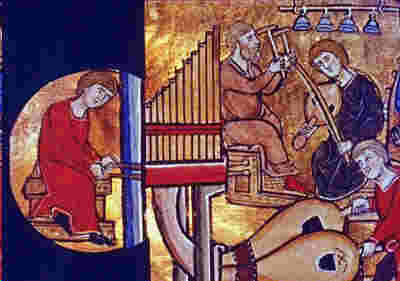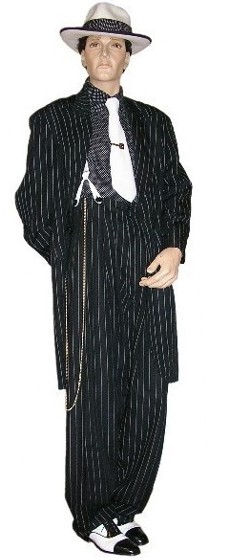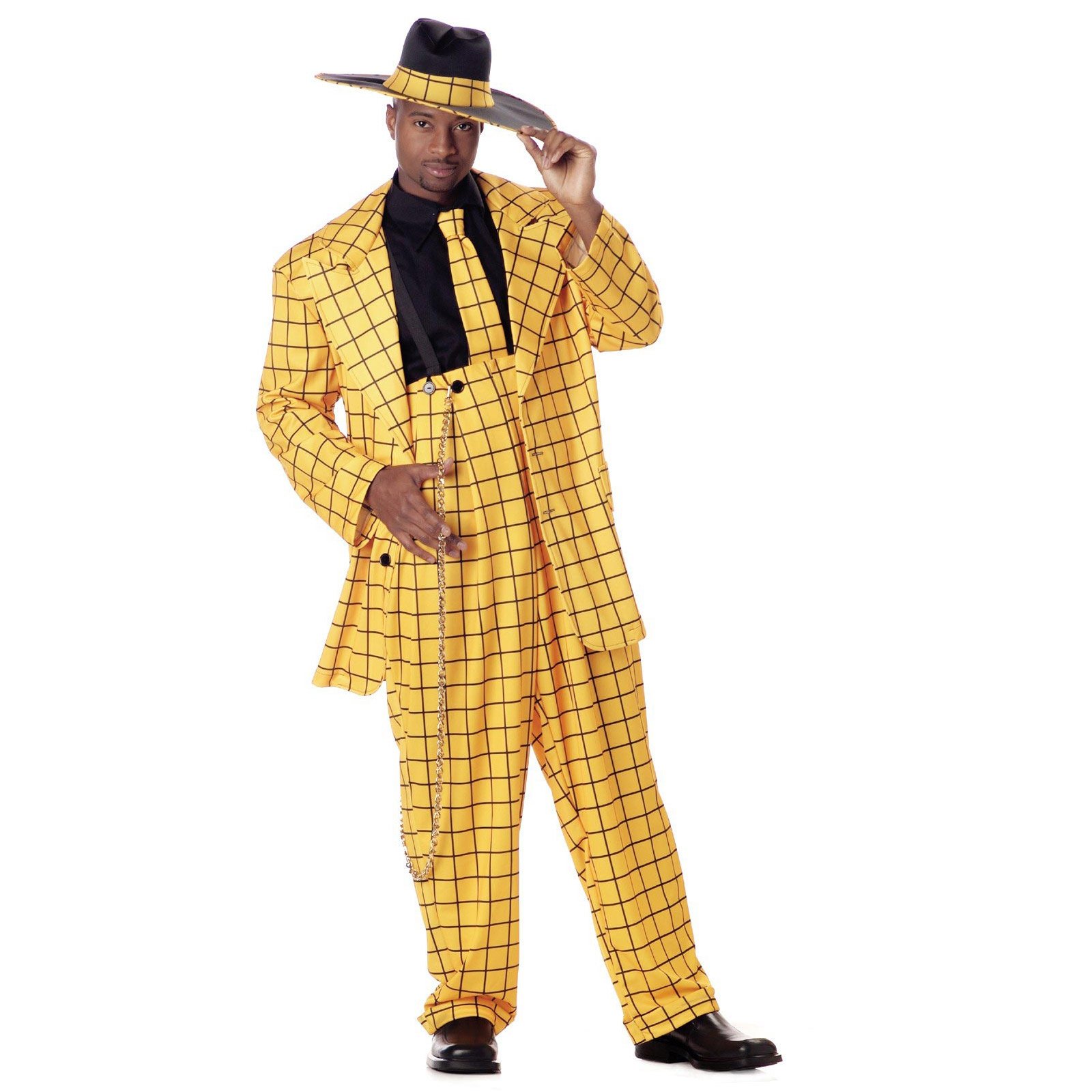
Welcome to Music
of the Big Band Era—page 3
hep, hip, and the zoot suit
In the '30s, hep and zoot were large. Why?
Today, the word hip means familiar with or informed about the
latest ideas, styles, or developments, as in My parents aren't exactly
hip, you know.
Exactly what or who is hip? Guys or gals who are hip are into
what's expected, have a casual or knowing air; they're cool. keenly aware
of, knowledgeable about, or interested in the latest trends or developments
they're cognizant, wise, into what's going on, very fashionable or stylish.
But in the Big Band era, no one was hip; the word didn't exist, even
though the feeling did. To be hip then was to be hep—hep,
as in hep cat. If you were a hepcat, you were a performer
or admirer of jazz, especially swing; and anyone who was into swing had to
be hep.
Where did hep originate? One theory is that hep is derived
from the word hipi, a word in the Wolof language of Senegal. The word
hipi, means to open one's eyes, to be aware.
No one really knows for sure why or how hep originated. But what
difference does it make? Then as now, it was hep to be hip.
Hep
is a word from a from a largely superannuated form of slang called jive
talk. In the days of the Big Bands, jive talk was in and the
music was on. If you were cool—hep—you spoke jive talk; you dug
the right music and jitterbugged. If you liked the
right music and jitterbugged you were in the groove.
Hepcats came in different flavors and from different
sectors of society. If they were young, they went to high school hops, drank
milkshakes, and heard swing bands on the radio; if they were of age, they
went to Harlem night clubs like the Cotton Club, drank hooch, heard Duke
Ellington live on stage, and partied all night. All were cool cats, but one
particular brand of cat was cooler than most. He was called the Zoot Suiter.
Zoot suiters were exceedingly in.
Zoot suiters were called that because many of them wore so-called zoot
suits, a particularly garish form of clothing that was fashionable among
African Americans, Mexican Americans, Puerto Ricans, Italian Americans, and
Filipino Americans and their emulators during the late 1930s and the 1940s.
a zoot suit for my sunday gal
Are you in the groove? Can you "dig a zoot suit with a reet pleat and a
drape shape, and a stuff cuff to look sharp enough to see your Sunday gal?" Are you in
the groove? Can you "dig a zoot suit with a reet pleat and a
drape shape and a stuff cuff to look sharp enough to see your Sunday gal?"
Want to hear more of this once cool but now quaint jive talk?
If your answer is yes, hear the song and dig the lyrics from a popular 1942 song called
A Zoot Suit
(For My Sunday Gal) by L. Wolfe Gilbert and Bob O'Brien.
Transport yourself to wartime America in 1943 when the zoot suit was all
the
rage and Swing was the thing. Music is by one of the one of the most
popular of all the big bands, Kay Kyser
and his Orchestra. It makes a great
way to groove.
- Explore the 1941 song called A Zoot Suit
(For My Sunday Gal):
click
here.
Much more about WWII era Big Band music and zoot suits
Explore the zoot suit men and women, the suit, and the
history, including the Zoot Suit Riots, the French Zoot Suiters, and the
Zazous:
click here.
more Music of the big band era features
Now journey back in time, when names like Glen Miller, Benny Goodman,
Jimmy and Tommy Dorsey were all over the air waves. Return to the era when
the Big Band was all the
rage and Swing was King. Visit one of the features in Music Of the Big
Band Era:
To visit one of the features of the Big Band Era, click the name of the
feature in the list above.
availability
- Features about the Big Bands Era are on the way. Check here from time to
time to see what's new.
ETAF Recommends
- The Big Bands, by George Thomas Simon. An overview of the Big Band era. Simon introduces almost all
the bands
and band leaders popular from 1935 to 1946 and explains Big Band music in
the context of the time in which it occurred.
- The Swing Era: The Development of Jazz, 1930-1945, by Gunther
Schuller. Schuller is a master musician, musicologist, critic, and
historian. This monumental study of swing runs to 900 pages and yet is
incredibly inexpensive.
- When the Music Stopped: The Big Band Era Remembered, by Bernie
Woods. As music editor at Variety at the height of the Big Band era, Woods
got to know many of the most important names in the business. Not a music
historian or musician himself, he presents a collection of personal music
and business reminiscences and anecdotes about subjects ranging from the big
bands of Benny Goodman, the Dorsey brothers, and Ralph Flanagan to
crooners like Perry Como and Frank Sinatra. He also discusses the
evolution of the music and its structure.
- The Zoot Suit Riots: The Psychology of Symbolic Annihilation,
by Mauricio Mazón. Mazón analyzes the psychodynamics of these riots using
previously undisclosed FBI and military records with the aim of providing
an understanding of their underlying causes.
—Page
1, 2,
3—






